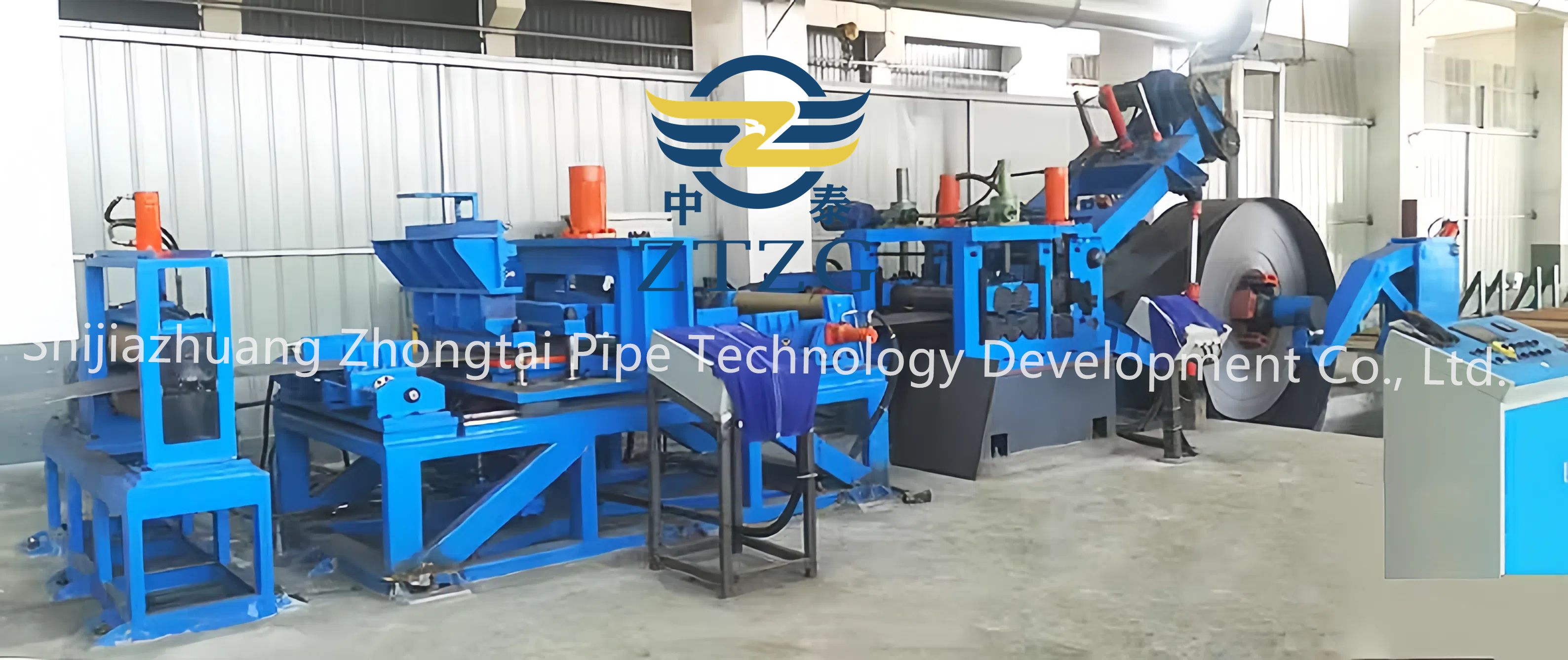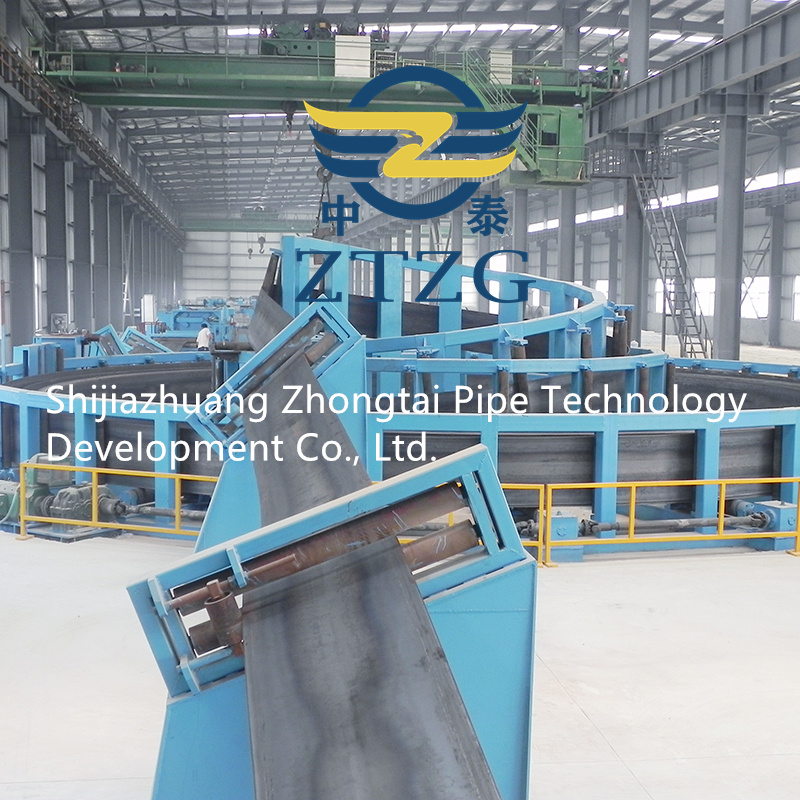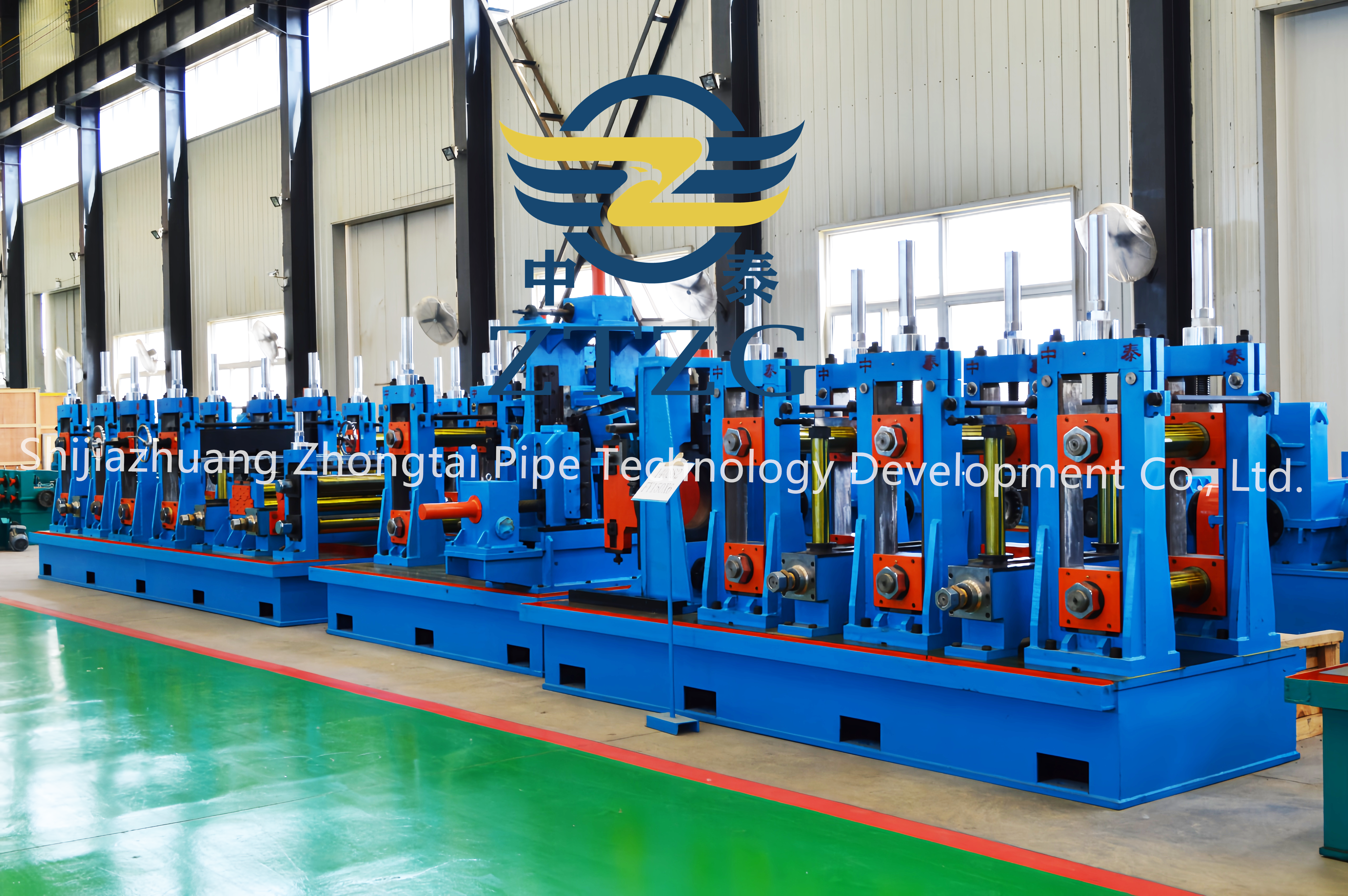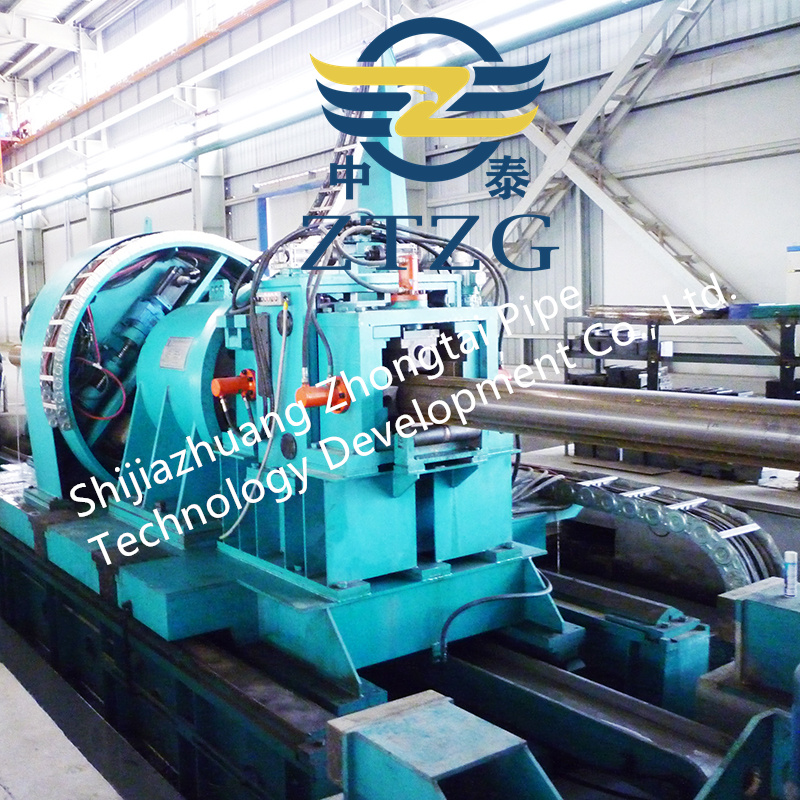An ERW pipe mill consists of several essential components that work together seamlessly to produce high-quality pipes:
- **Uncoiler:** This device feeds the steel coil into the pipe mill, allowing for continuous production without interruptions.
- **Leveling Machine:** Ensures the steel strip is flat and uniform before it enters the welding section, minimizing distortions during the forming process.
- **Shearing and Butt-Welder:** Cuts the ends of the steel strip to prepare them for welding. The butt-welder joins the ends together using high-frequency electric resistance welding.
- **Accumulator:** Controls the strip tension and maintains a steady supply of material to the forming and sizing mill, ensuring smooth and continuous pipe production.
- **Forming and Sizing Mill:** Shapes the welded strip into the desired pipe diameter and wall thickness. This section includes multiple stands of rollers that gradually form the cylindrical shape of the pipe.
- **Flying Cut-Off:** Cuts the pipe to the specified length as it exits the mill. The flying cut-off operates at high speeds to ensure precise cutting without compromising production efficiency.
- **Packing Machine:** Packages the finished pipes for storage and transportation, protecting them from damage and ensuring they reach customers in optimal condition.
Each component plays a critical role in the ERW pipe manufacturing process, contributing to the efficiency, precision, and quality of the final product. Modern ERW pipe mills incorporate advanced automation and control systems to optimize production throughput and minimize downtime, thereby enhancing overall operational efficiency.
Post time: Aug-01-2024
















